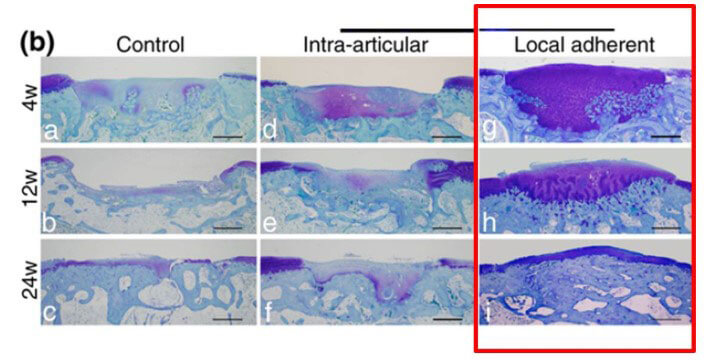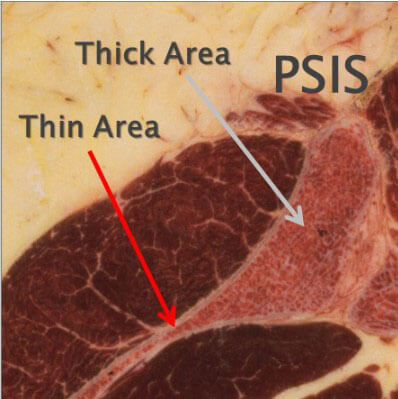The Importance of Image Guidance | Advanced Injection Skills of Regenexx Doctors
At Regenexx Cayman, we know that both bone marrow aspirations and stem cell injections should be carried out with guidance.

Image guidance means that the doctor can see where the needle is going. And for both procedural results and patient comfort, there’s no reason that this shouldn’t be part of their protocol.
But not all stem cell clinics use guidance.
How important is it to take a bone marrow aspirate with guidance?

Imaging guidance means that the doctor can see where the needle is going. This is doubly important in the procedure used to harvest the stem cells: a bone marrow aspiration. While many physicians who are just starting to use bone marrow stem cells to treat things like knee, shoulder, hip, ankle, and hand/foot problems may believe they can take an accurate bone marrow aspirate without knowing where the needle is located, a simple anatomy review will show why this isn’t the case.
Above, you can see a slice through the PSIS (posterior superior iliac spine) area of the back of the pelvis (near the dimples of Venus). This is the most common bone marrow aspiration site to obtain stem cells. Note that the red arrow points to a section of the bone that’s paper thin and that the green arrow points to an area where it’s very thick. These areas are very close together, such that a needle that happens to get into the thin area will get no bone marrow (which is located inside the bone), but simply go through and through the bone, leading to a slow draw of blood that contains few of the stem cells sought. However, a needle that is guided to the correct thick area can easily tap into the bone marrow space and collect stem cells.
How did we learn this? 5 years ago as we started to culture cells, we learned it the hard way. A sample from the thin area produced no measurable cells in culture, while a needle into the thick area produced good cultured stem cells. The upshot? When taking bone marrow, a “blind” procedure (without fluoroscopic or ultrasound guidance) is likely to sometimes collect no stem cells. In addition, since the bedside centrifuges used by many physicians have no way to measure what’s obtained, the doctor never knows he’s just taken a bad sample that won’t help the patient, as a bad sample looks just like a good sample!
Placing Stem Cells with Accuracy
What about injecting stem cells? Can you inject stem cells blindly into a joint and get good results? This is an important question.
We’ve always used imaging guidance to ensure the cells get to the right place. The reason? Even in easier to inject joints, including the knee, experienced physicians injecting blindly in the office can miss the joint up to 14-45% of the time (depending on approach and the severity of arthritis).
So that means that injecting without imaging guidance (blind) will have stem cells get into the knee joint in some patients only about half of the time. Stem cells that aren’t in the knee will have no effect on the knee. The accuracy in other joints is often worse because the joints are smaller or have more soft-tissue.

What if we compare blindly injecting cells in a knee joint (if they get into the joint) versus exact placement to a certain spot within the joint? The diagrams above are from a study where the stem cells were placed blindly into the joint (intra-articular) versus exactly on the lesion (local adherent). The control was just injection of saline, which is far left. Notice that the purple stained cells on the surface are new cartilage cells (the blue cells under that are bone). The control shows little change, the intra-articular blind injection isn’t much better, and when the cells are placed directly on the specific damaged spot within the joint (far right local adherent) we see good cartilage repair. The same would hold true to injecting cells into a specific tendon, ligament, part of a meniscus, labrum, etc…
In summary, blindly harvesting stem cells without imaging guidance or blindly placing them into an area in need of repair doesn’t work well. Physicians practicing cell-based medicine need to have the ability to use many imaging modalities (fluoroscopy and ultrasound) to take or place cells.
Placing Stem Cells with Accuracy
This video provides an excellent look at how advanced Regenexx treatments are and why Regenexx is so different than other stem cell solutions. In this video, Regenexx co-founder and physician Dr. John Schultz guides you through a Knee ACL injection procedure, where you will see just how important the placement of cells can be in terms of producing the best possible patient outcomes.
Originally published on Regenexx.com, written by Dr Centeno.